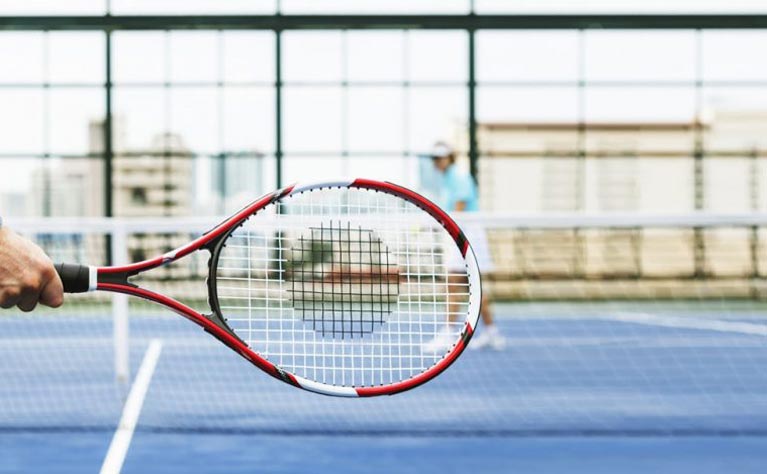Andrew, a keen sportsman was advised that a knee replacement was his only option for prolonged knee pain. He is now back to tennis and cycling following treatment with Professor Adrian Wilson.

Within six months I was back on my bike and at last playing tennis again. For the first time in ages i was able to do lateral movements pain free and with no after effects like inflammation.
TAGGED INProf Adrian Wilson
Knee osteotomy (realignment) surgery
The London Knee Osteotomy Centre
Andrew, 52 had a femoral osteotomy and a meniscal transplant to cure his painful right knee and avoid a knee replacement.
Andrew was referred to Prof Wilson at the age of 52 after continued problems with his right knee after having had his cartilage removed when he was seventeen. After years of pain and various operations to try and remedy it, it was suggested that he have a knee replacement.
Following a consultation with Adrian, he diagnosed knocked knees and a destroyed meniscus and recommended that he carry out a combined osteotomy, to realign Andrew’s knee, and a meniscus transplant.
Andrew explains: “This was really my last chance saloon. My expectations were not high as I had had so many promises before. However a knee replacement was a worse thought as I knew that they would probably need to re do in 10 years or so.”
A knee osteotomy is a relatively unknown operation in the UK and in many cases can offer an alternative to a total or partial knee replacement. The main benefit is that the patient gets to keep and continue to use their own knee, rather than having to deal with a new knee. They are therefore, as in Andrew’s case, more likely to get back to full activity. It can be used for patients well into their eighties, which is the case in Japan.
Adrian performed the meniscus transplant via keyhole surgery. The new meniscus to be transplanted is matched to the patient using their MRI scan to ensure the new meniscus is the right size to fit their knee. This is then pulled into place using sutures, which are passed in through tiny tunnels made through the knee and then stitched into place.
After his operation, Andrew was allowed only very limited weight bearing for six weeks, and wore a knee brace to limit the movement in his knee. After recovery from the meniscus transplant, there is a much greater feeling of stability of the knee, because the meniscus itself is an important stabilising structure, and the knee feels ‘normal’ once more.
Andrew has no regrets about having taken this option:
“Although the surgery was quite painful it was the rehab that took much longer than I thought it would. However within six months I was back on my bike and at last playing tennis again. For the first time in ages i was able to do lateral movements pain free and with no after effects like inflammation. I can therefore play all the sports I want, but would say that you have to continually do rehab to keep the knee strong. Swimming is the best medicine.
Expectations have been exceeded! Anyone thinking of doing this and providing you are reasonably fit, I would go ahead.”
Adrian concludes: “Andrew is a great success story and has done very well with this surgery which was carried out five years ago. As I had hoped he has been able to get back to sport, including tennis.”

Looking to speak to our team? Call us on 020 7046 8000 020 7046 8085
To book an appointment
or refer a patient
